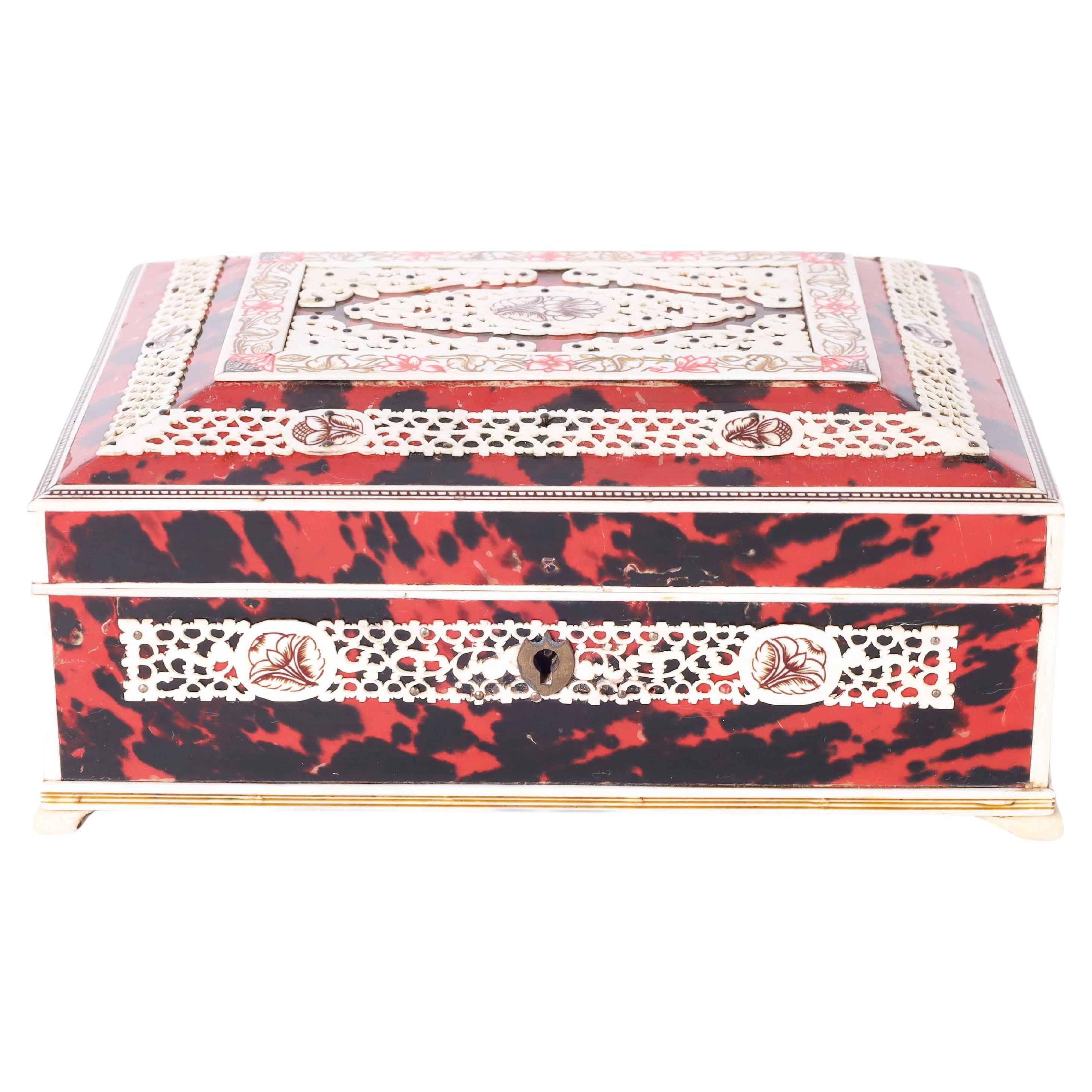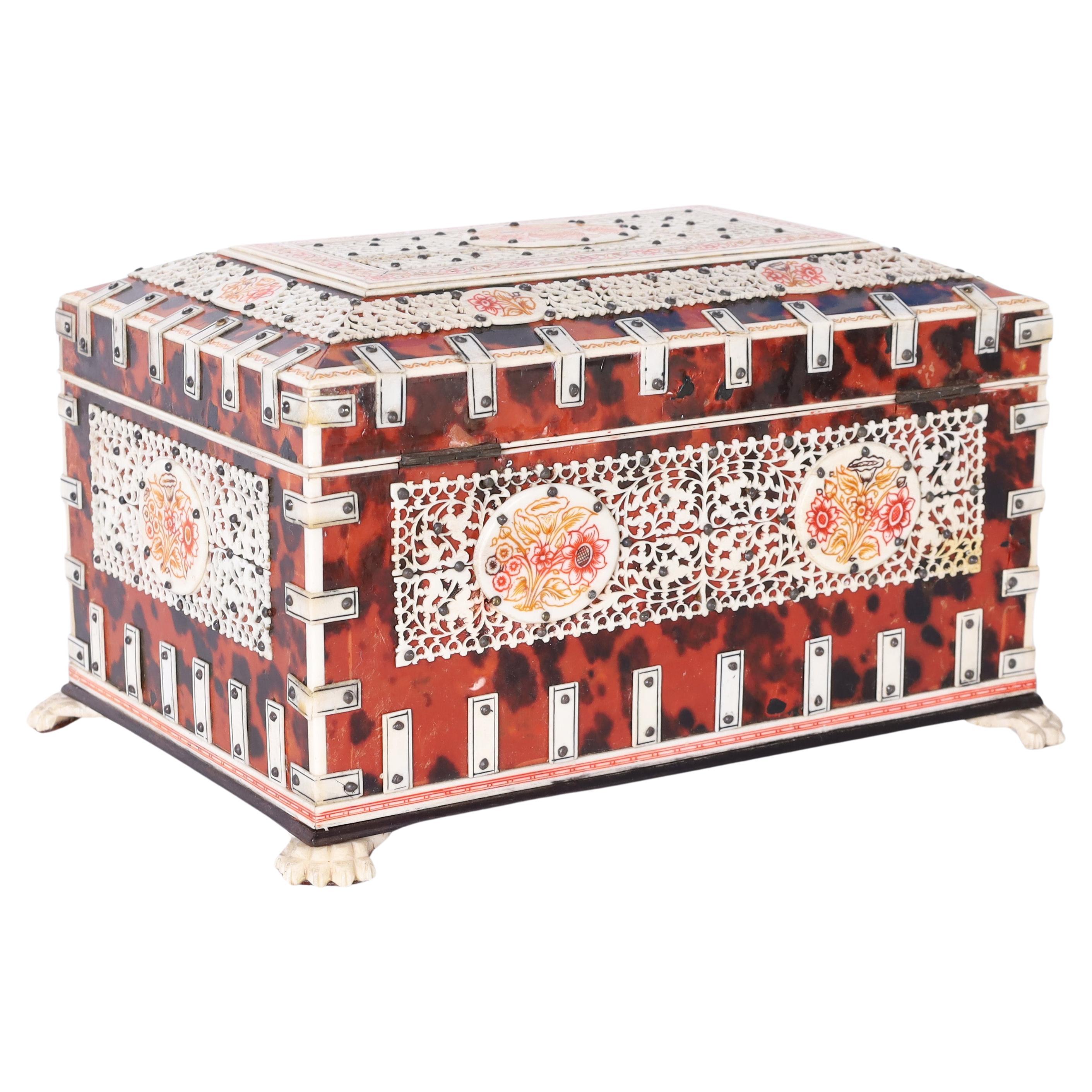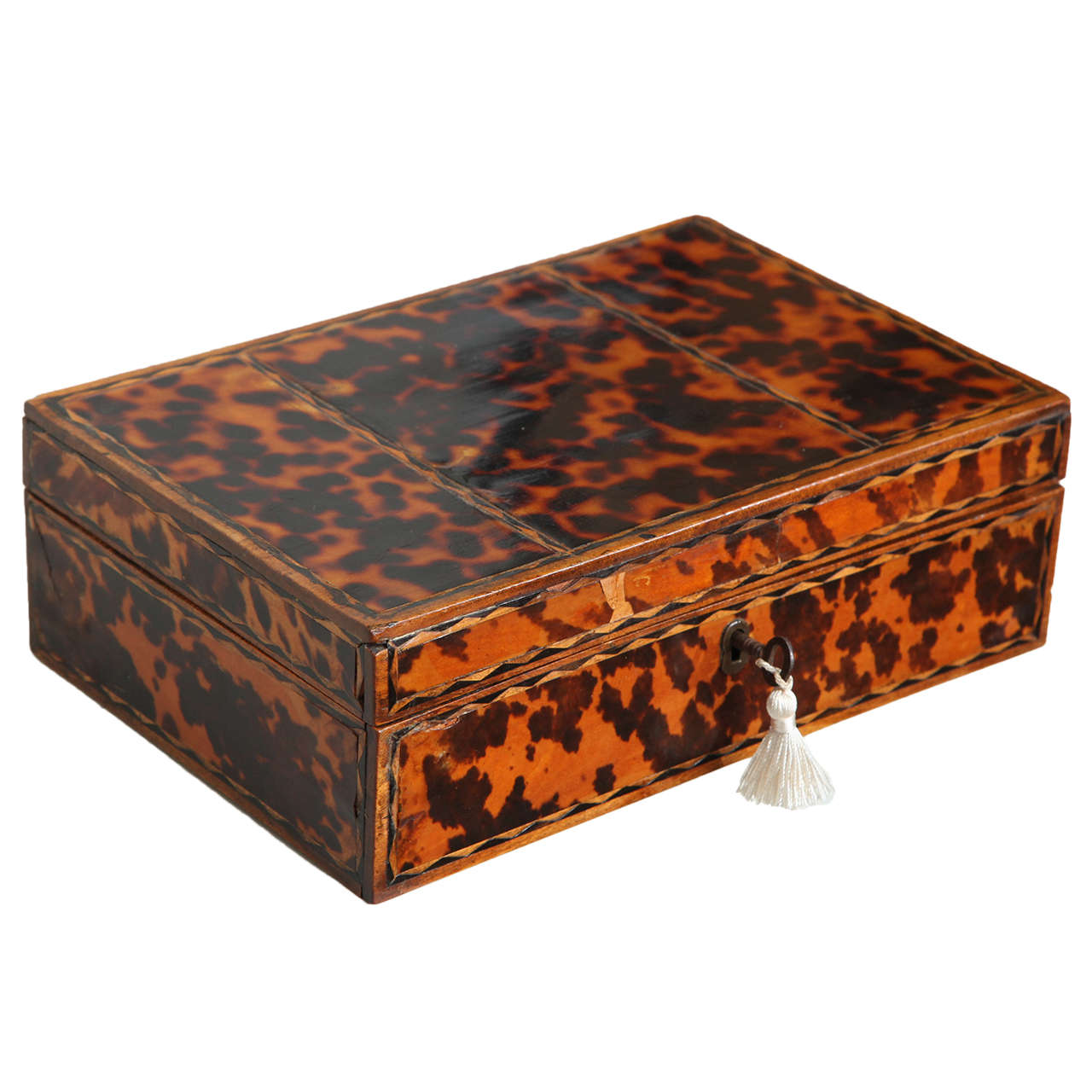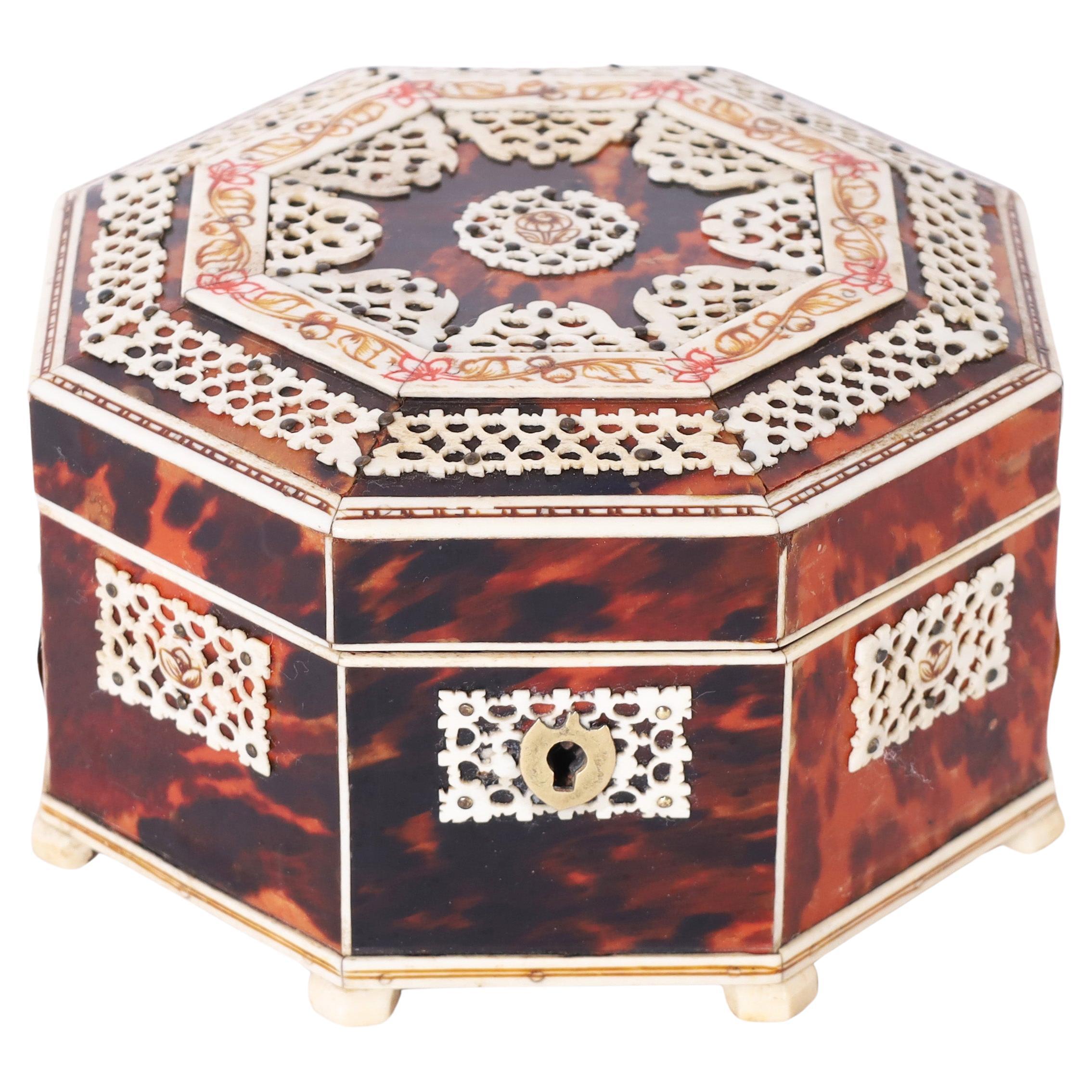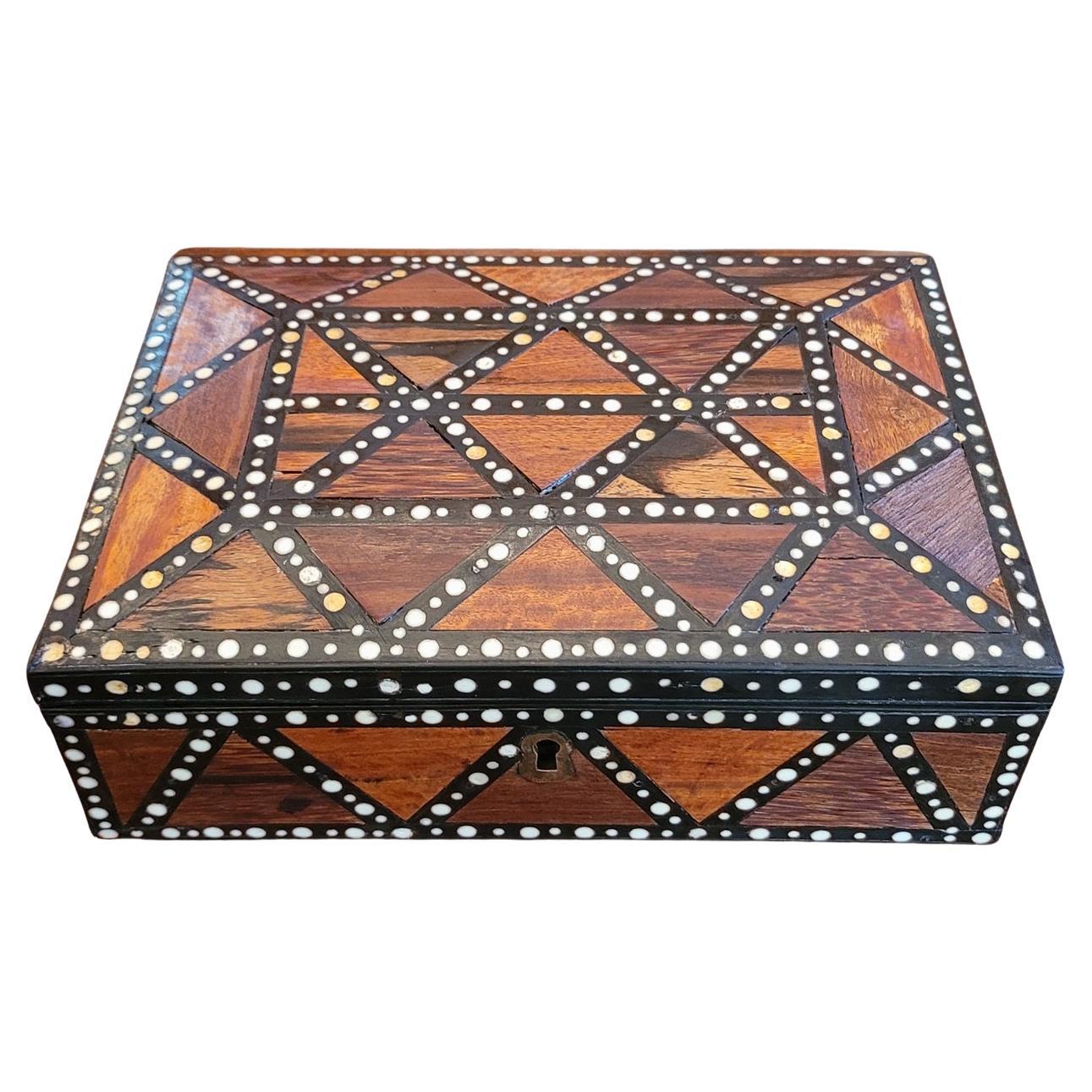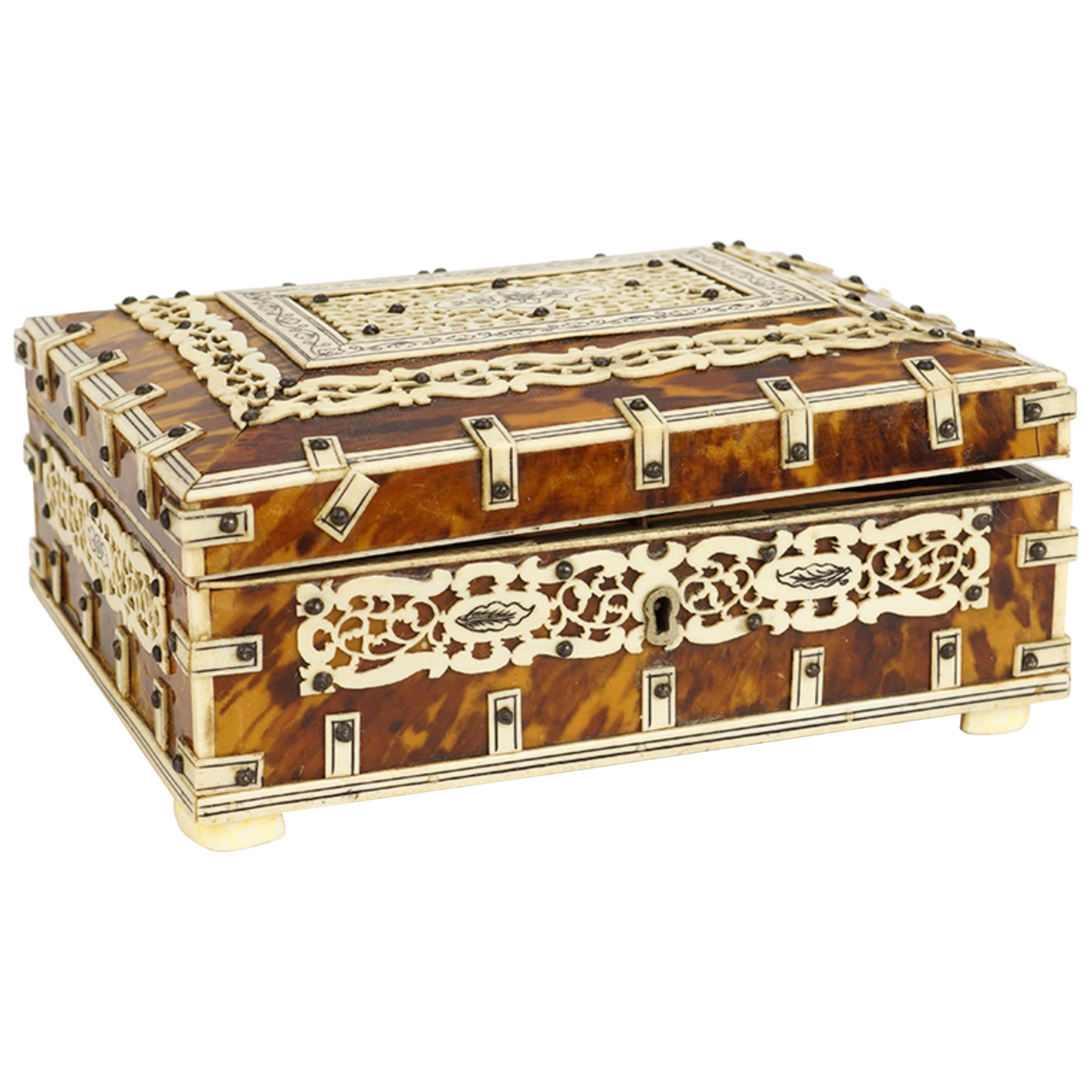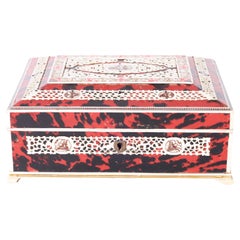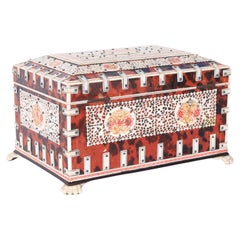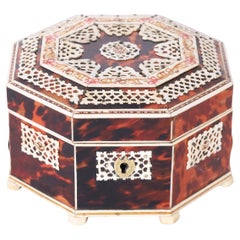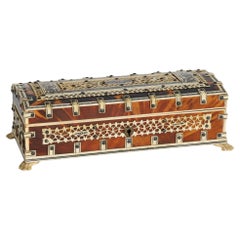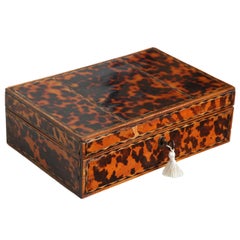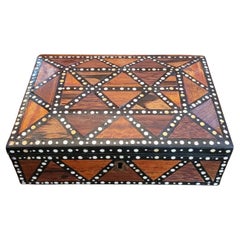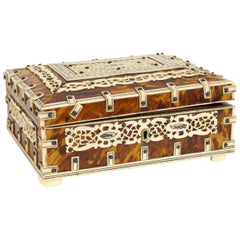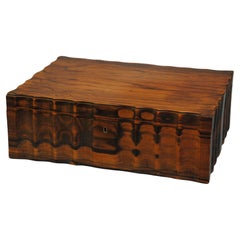Items Similar to Anglo Indian Faux Tortoise Trinket Box
Want more images or videos?
Request additional images or videos from the seller
1 of 7
Anglo Indian Faux Tortoise Trinket Box
$750
£578.16
€657.15
CA$1,068.64
A$1,162.57
CHF 613.47
MX$13,981.91
NOK 7,738.69
SEK 7,202.08
DKK 4,907.83
About the Item
Inspired vintage Anglo Indian hinged box crafted in mahogany and clad in a faux tortoise laminate.
- Dimensions:Height: 2.5 in (6.35 cm)Width: 6 in (15.24 cm)Depth: 4 in (10.16 cm)
- Style:Anglo-Indian (In the Style Of)
- Materials and Techniques:
- Place of Origin:
- Period:
- Date of Manufacture:Circa 1960
- Condition:Wear consistent with age and use.
- Seller Location:Palm Beach, FL
- Reference Number:Seller: 69731stDibs: LU860338428652
About the Seller
4.9
Vetted Professional Seller
Every seller passes strict standards for authenticity and reliability
Established in 1992
1stDibs seller since 2009
1,150 sales on 1stDibs
Typical response time: 1 hour
- ShippingRetrieving quote...Shipping from: Palm Beach, FL
- Return Policy
More From This Seller
View AllAntique Anglo Indian Tortoise and Bone Box
Located in Palm Beach, FL
Standout exotic Anglo Indian lidded box handcrafted in mahogany and clad in tortoise shell with applied lacy bone designs inscribed and painted with flowers. The interior has a mirro...
Category
Early 20th Century Indian Anglo-Indian Decorative Boxes
Materials
Bone, Tortoise Shell, Mirror, Mahogany
Anglo Indian Tortoise and Bone Box
Located in Palm Beach, FL
Impressive Anglo Indian box crafted in mahogany and clad in tortoise shell decorated with bone straps, carved and painted floral panels, and paw feet. The inside has a mirror and bon...
Category
Early 20th Century Indian Anglo-Indian Decorative Boxes
Materials
Bone, Tortoise Shell
Antique Anglo Indian Bone and Tortoise Box
Located in Palm Beach, FL
Impressive antique Anglo Indian box crafted in mahogany, clad in tortoise shell, and ambitiously decorated with bone. The inside has a mirror and red felt lining.
Category
Antique 19th Century Indian Anglo-Indian Decorative Boxes
Materials
Bone, Tortoise Shell
Petite Antique Anglo Indian Bone and Tortoise Box
Located in Palm Beach, FL
Charming petite antique Anglo Indian lidded box handcrafted in indigenous hardwoods clad in tortoise shell and decorated with elaborate lacy bone designs, featuring an etched and pai...
Category
Early 20th Century Indian Anglo-Indian Decorative Boxes
Materials
Bone, Tortoise Shell
Antique Anglo Indian Box Form Quill Lap Top or Travel Desk
Located in Palm Beach, FL
Impressive antique Anglo Indian lap top desk crafted in quills and ebony decorated with bone dots. The surprising interior has multiple components featuring a felt writing surface, n...
Category
Early 20th Century Indian Anglo-Indian Decorative Boxes
Materials
Bone, Felt, Wood, Ebony
Vintage Turtle Box by Antony Redmile
By J. Antony Redmile
Located in Palm Beach, FL
Whimsical mid century trinket box crafted in composition in a turtle form having a polished stone lid handle and silver plate on brass head and...
Category
20th Century English Mid-Century Modern Decorative Boxes
Materials
Silver Plate, Copper
You May Also Like
Early 19th Century Faux Tortoise Shell Inlaid Box
Located in Greenwich, CT
Charming early 19th century box decorated in faux tortoise shell and having zig zag patterned string inlay, the interior with fitted tray for use as a jewelry or work box and retaini...
Category
Antique Early 19th Century British Boxes
Materials
Ebony, Wood
19C Anglo Ceylonese Specimen Wood Trinket Box
Located in Dallas, TX
PRESENTING A BEAUTIFUL and RARE 19C Anglo Ceylonese Specimen Wood Trinket Box.
Made in ‘Galle’, Ceylon (now Sri Lanka) circa 1860-80.
Made for the ex...
Category
Antique 19th Century Sri Lankan Anglo-Indian Jewelry Boxes
Materials
Bone, Hardwood, Ebony, Sandalwood
Tortoise Shell Decorative Box with Paw Feet. Tortoise Shell With Bun Feet.
Located in Buchanan, MI
Tortoise shell decorative box with bun feet. We have other tortoise boxes similar in form that would be a lovely collection. Feel free to call or email with questions. Priced per b...
Category
Antique 19th Century English Anglo-Indian Decorative Boxes
Materials
Tortoise Shell
A Fine Anglo Indian Coromandel Workbox
Located in Lincolnshire, GB
A fine early 19th century coromandel work box with moulded front design and fitted interior containing a super collection of sea shells.
Ivory registration number 8NEDUS4R.
Category
Antique Early 19th Century Indian Anglo-Indian Decorative Boxes
Materials
Ivory, Wood
Faux Tortoise Shell British Cigar or Trinket Box W/Ivory Framing & Original Key
Located in Larkspur, CA
Faux tortoise shell British cigar or trinket box w/ivory framing & original key.
Category
Antique Early 1900s Jewelry Boxes
Materials
Tortoise Shell
Antique Anglo-Indian Vizagapatam Jewelry Inlaid Sadeli Footed Box
Located in Moreno Valley, CA
Antique 19th century Anglo-Indian jewelry, trinket footed box, inlay with ebony, mosaic marquetry Sadeli work and a carved Hindu scene on top.
The box case is made from sandalwood wi...
Category
Early 20th Century Indian Anglo-Indian Decorative Boxes
Materials
Bone, Mother-of-Pearl, Wood
More Ways To Browse
India Trinket Box
Vintage Hinged Box
Vintage Indian Trinket Box
Nils Fougstedt
German Brass Box
Mexican Pearl
Mid Century Sewing Box
Middle Eastern Box
Oval Silver Box
Porcelain Trinket Box Limoges
Vanity Antique Box
Vintage Japanese Lacquer Box
Antique Bamboo Box
Antique Dutch Silver Boxes
Mother Of Pearl Inlaid Lacquer Box
Swedish Wooden Box
Vintage Bakelite Box
Antique Betel Box
